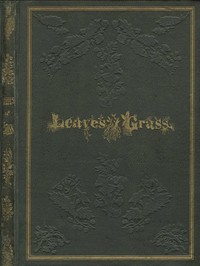Leaves of Grass by Walt Whitman
"Leaves of Grass" by Walt Whitman is a celebrated collection of poetry written during the mid-19th century. The work explores themes of individuality, democracy, and the connection between the body and the soul, expressing Whitman's vision of a unified human experience. Through his verse, he seeks to capture the essence of American life and identity, showcasing the beauty and complexity of both nature and humanity. The opening of "Leaves of Grass" serves
as an introduction to Whitman's poetic philosophy and establishes a profound connection between the self and the universe. It begins with an invocation of the soul, emphasizing the unity of the body and spirit. Whitman introduces his intent to celebrate the individuality of each person while also embracing broader themes of democracy and collective humanity. Rich imagery and musical language draw readers into a world that values the interconnectedness of all life. As he reflects on the essence of existence and the act of creating poetry, he challenges traditional themes in literature, proclaiming that life and love, as well as war and mortality, are foundational to the human experience. (This is an automatically generated summary.)
Read or download for free
| How to read | Url | Size | |||
|---|---|---|---|---|---|
| Read now! | https://www.gutenberg.org/ebooks/1322.html.images | 844 kB | |||
| EPUB3 (E-readers incl. Send-to-Kindle) | https://www.gutenberg.org/ebooks/1322.epub3.images | 844 kB | |||
| EPUB (older E-readers) | https://www.gutenberg.org/ebooks/1322.epub.images | 879 kB | |||
| EPUB (no images, older E-readers) | https://www.gutenberg.org/ebooks/1322.epub.noimages | 681 kB | |||
| Kindle | https://www.gutenberg.org/ebooks/1322.kf8.images | 946 kB | |||
| older Kindles | https://www.gutenberg.org/ebooks/1322.kindle.images | 847 kB | |||
| Plain Text UTF-8 | https://www.gutenberg.org/ebooks/1322.txt.utf-8 | 762 kB | |||
| Download HTML (zip) | https://www.gutenberg.org/cache/epub/1322/pg1322-h.zip | 555 kB | |||
| There may be more files related to this item. | |||||
Similar Books
About this eBook
| Author | Whitman, Walt, 1819-1892 |
|---|---|
| Title | Leaves of Grass |
| Note | Wikipedia page about this book: https://en.wikipedia.org/wiki/Leaves_of_Grass |
| Credits | G. Fuhrman and David Widger |
| Reading Level | Reading ease score: 62.2 (8th & 9th grade). Neither easy nor difficult to read. |
| Language | English |
| LoC Class | PS: Language and Literatures: American and Canadian literature |
| Subject | American poetry -- 19th century |
| Category | Text |
| EBook-No. | 1322 |
| Release Date | May 1, 1998 |
| Most Recently Updated | Apr 27, 2021 |
| Copyright Status | Public domain in the USA. |
| Downloads | 7838 downloads in the last 30 days. |
| Project Gutenberg eBooks are always free! | |

